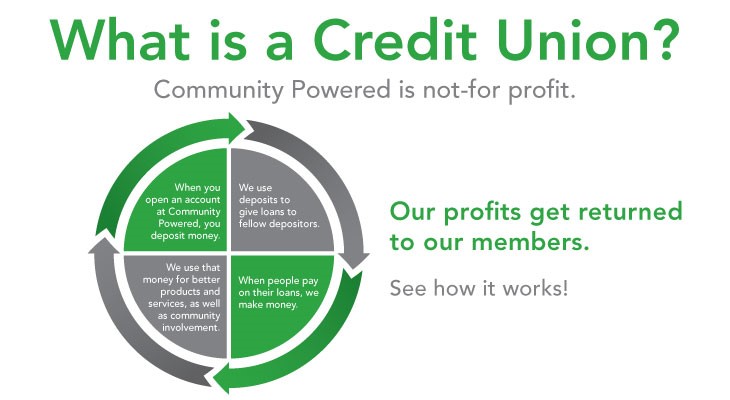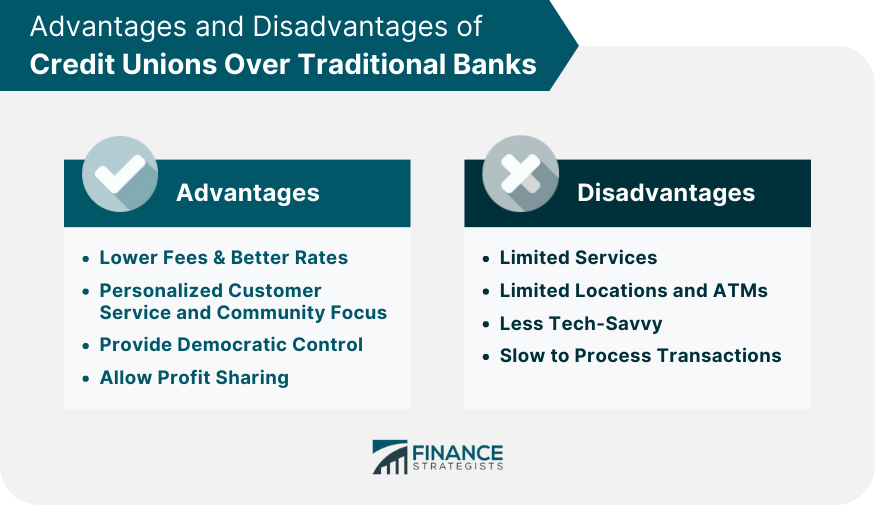Credit Unions in Wyoming: Comprehensive Financial Solutions and Member Advantages
Credit Unions in Wyoming: Comprehensive Financial Solutions and Member Advantages
Blog Article
The Ultimate Overview to Understanding Lending Institution

Debt unions stand as unique financial entities, rooted in principles of shared assistance and member-driven operations. As we navigate through the complexities of credit report unions, an informative trip waits for to lose light on these member-focused institutions and how they vary from traditional banks.
What Are Cooperative Credit Union?
Debt unions are member-owned banks that supply a series of financial services to their members. Unlike conventional financial institutions, cooperative credit union operate as not-for-profit companies, implying their primary focus gets on offering their members instead than making the most of revenues. Participants of a cooperative credit union typically share an usual bond, such as working for the exact same employer, coming from the exact same community, or belonging to the same company.
Among the key benefits of credit scores unions is that they usually provide greater rate of interest on interest-bearing accounts and lower rate of interest prices on fundings contrasted to banks. Credit Unions in Wyoming. This is since cooperative credit union are structured to benefit their members directly, permitting them to hand down their earnings in the form of better rates and fewer fees. Furthermore, lending institution are recognized for their individualized consumer service, as they prioritize developing connections with their participants to recognize their one-of-a-kind monetary demands and goals
History and Development of Cooperative Credit Union
The origins of member-owned financial cooperatives, recognized today as lending institution, trace back to a time when areas looked for choices to standard banking organizations. The principle of lending institution originated in the 19th century in Europe, with Friedrich Wilhelm Raiffeisen usually attributed as the pioneer of the participating banking motion. Raiffeisen established the first recognized credit history union in Germany in the mid-1800s, emphasizing neighborhood assistance and self-help principles.
The evolution of cooperative credit union proceeded in The United States and copyright, where Alphonse Desjardins established the initial cooperative credit union in copyright in 1900. Soon after, in 1909, the initial U.S. lending institution was created in New Hampshire by a group of Franco-American immigrants. These very early credit history unions run on the essential concepts of mutual help, democratic control, and member ownership.
With time, credit score unions have expanded in popularity worldwide because of their not-for-profit structure, emphasis on serving members, and using competitive economic services and products. Today, cooperative credit union play an essential duty in the financial sector, providing community-oriented and accessible banking options for organizations and individuals alike.

Membership and Qualification Criteria
Membership at a credit scores union is commonly limited to individuals meeting details qualification standards based on the establishment's starting principles and regulatory requirements. Some credit report unions might only offer people who function or live in a specific area, while others might be tailored to employees of a specific firm or participants of a certain association.
Additionally, lending institution are structured as you could try these out not-for-profit companies, indicating that their primary objective is to serve their participants as opposed to generate earnings for shareholders. This concentrate on member solution commonly equates into even more personalized focus, lower costs, and competitive rate of interest on financings and cost savings accounts. By satisfying the eligibility requirements and becoming a participant of a lending institution, people can access a variety of financial products and solutions tailored to their particular demands.
Solutions and Products Provided
Among the essential elements that establishes credit rating unions apart is the diverse series of monetary solutions and products they provide to their members. Credit unions commonly offer typical financial services such as cost savings and inspecting accounts, finances, and bank card. Members can also take advantage of investment solutions, consisting of retirement accounts and financial preparation support. Numerous cooperative credit union offer competitive rate of interest on interest-bearing accounts and financings, as well as lower costs contrasted to typical financial institutions.
Furthermore, cooperative credit union usually give practical online and mobile banking alternatives for members to conveniently handle their funds. They may offer rewards such as shared branching, permitting members to access their accounts at other cooperative credit union throughout the country. Some credit rating unions additionally supply insurance products like home, life, and auto insurance policy to help participants protect their possessions and enjoyed ones.

Advantages of Financial With Credit Unions
When taking into consideration banks, checking out the benefits of banking with credit unions discloses distinct advantages for members seeking personalized solution and competitive prices. One substantial advantage of cooperative credit union is their concentrate on customized customer care. Unlike large financial institutions, lending institution are member-owned and focus on building solid relationships with their members. This indicates that credit rating union personnel often Resources have a deeper understanding of their members' economic requirements and can offer tailored remedies to help them achieve their goals. Furthermore, cooperative credit union are understood for using affordable rate of interest on savings more tips here and lendings accounts. Because they are not-for-profit organizations, lending institution can usually offer lower funding rates, higher savings prices, and reduced costs contrasted to typical banks. This can cause considerable expense financial savings for members with time. On the whole, financial with a debt union can provide a more tailored, cost-efficient, and member-centric economic experience.
Conclusion
To conclude, cooperative credit union stick out as member-owned financial institutions that prioritize serving their participants over taking full advantage of earnings. With beginnings dating back to 19th century Europe, cooperative credit union follow principles of mutual assistance and participant possession. They use a variety of monetary solutions and items, consisting of traditional banking solutions, investment choices, and competitive rate of interest prices. Subscription eligibility requirements are details and show a community-oriented strategy, giving customized customer support and a member-centric economic experience.
Credit history unions are member-owned monetary institutions that offer a variety of banking services to their participants. The idea of credit score unions stem in the 19th century in Europe, with Friedrich Wilhelm Raiffeisen commonly attributed as the pioneer of the cooperative financial motion.The development of credit history unions continued in North America, where Alphonse Desjardins established the initial debt union in copyright in 1900. Debt unions commonly supply conventional financial solutions such as cost savings and checking accounts, lendings, and credit rating cards.When taking into consideration monetary institutions, checking out the benefits of banking with debt unions exposes one-of-a-kind benefits for participants seeking personalized solution and affordable rates.
Report this page